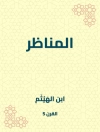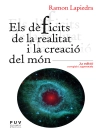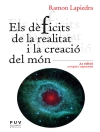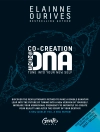This highly interdisciplinary volume brings together a carefully curated set of case studies examining complex systems with multiple time scales (MTS) across a variety of fields: materials science, epidemiology, cell physiology, mathematics, climatology, energy transition planning, ecology, economics, sociology, history, and cultural studies. The book addresses the vast diversity of interacting processes underlying the behaviour of different complex systems, highlighting the multiplicity of characteristic time scales that are a common feature of many and showcases a rich variety of methodologies across disciplinary boundaries.
Self-organizing, out-of-equilibrium, ever-evolving systems are ubiquitous in the natural and social world. Examples include the climate, ecosystems, living cells, epidemics, the human brain, and many socio-economic systems across history. Their dynamical behaviour poses great challenges in the pressing context of the climate crisis, since they may involve nonlinearities, feedback loops, and the emergence of spatial-temporal patterns, portrayed by resilience or instability, plasticity or rigidity; bifurcations, thresholds and tipping points; burst-in excitation or slow relaxation, and worlds of other asymptotic behaviour, hysteresis, and resistance to change.
Chapters can be read individually by the reader with special interest in such behaviours of particular complex systems or in specific disciplinary perspectives. Read together, however, the case studies, opinion pieces, and meta-studies on MTS systems presented and analysed here combine to give the reader insights that are more than the sum of the book’s individual chapters, as surprising similarities become apparent in seemingly disparate and unconnected systems. MTS systems call into question naïve perceptions of time and complexity, moving beyond conventional ways of description, analysis, understanding, modelling, numerical prediction, and prescription of the worldaround us.
This edited collection presents new ways of forecasting, introduces new means of control, and – perhaps as the most demanding task – it singles out a sustainable description of an MTS system under observation, offering a more nuanced interpretation of the floods of quantitative data and images made available by high- and low-frequency measurement tools in our unprecedented era of information flows.
Chapter “Multiplicity of Time Scales in Blood Cell Formation and Leukemia” is available open access under a Creative Commons Attribution 4.0 International License via link.springer.com.
Table of Content
Foreword.- Preface.- Index Gratiarum.- Table of Contents II.- Part I. Geosphere: Climate, Cosmology, Matter.- Multiplicity of time scales in climate and the Earth system (E. Kaas).- Climate dynamics: The dichotomy of stochastic concepts and deterministic modeling (H. von Storch).- The climate system with human actors – a time scale perspective (J. Hesselbjerg Christensen).- The impact of public perception of timescales in the climate system on mitigation policies (J. Nielsen, E. Kaas).- Multiplicity of timescales: Insight into galaxy formation (P. Laursen).- Measuring multiple time scales in amorphous materials (T. Hecksher).- Part II. Biosphere: Evolution, Physiology, Ecology.- Multiplicity of time scales in biological evolution (S. Toxværd).- Bridging time scales in evolutionary biology.- D.A. Hartasánchez et al.).- The effect of different time scales in cell and developmental biology as recorded by microscopy (P. Nyeng).- Time scales in the biosphere and geosphere and theirinteractions: Importance for establishing Earth system state (K. Richardson, M. Rosing).- Time scales and perspectives are relative: shifting baselines and sea turtles (M. Stachowitsch).- Part III. Anthroposphere (societal focus): Engineering, Energy System Transformation, Medicine.- Multiscale properties of traffic flow: The macroscopic impact of traffic waves (B. Seibold, N. Khoudari).- Integrating multiple time scales in the economic modelling of the low-carbon transition (H. Pollitt).- Multiplicity of time scales in blood cell formation and leukemia: Contributions of computational disease modeling to mechanistic understanding and personalized medicine (T. Stiehl).- A unified computational model for the human response to lipopolysaccharide-induced inflammation (K.A. Windoloski et al.).- Time scales in disease transmission dynamics (V. Andreasen).
About the author
Bernhelm Booß-Bavnbek is Emeritus in the Department of Science and Environment at Roskilde University in Denmark.
Jens Hesselbjerg Christensen is professor in the Department of Physic, Ice, Climate and Earth; Niels Bohr Institute, University of Copenhagen
Katherine Richardson is professor at the Department of Macroecology, Evolution, and Climate at Copenhagen University in Denmark.
Oriol Vallès Codina is research fellow at Leeds University Business School, UK.












